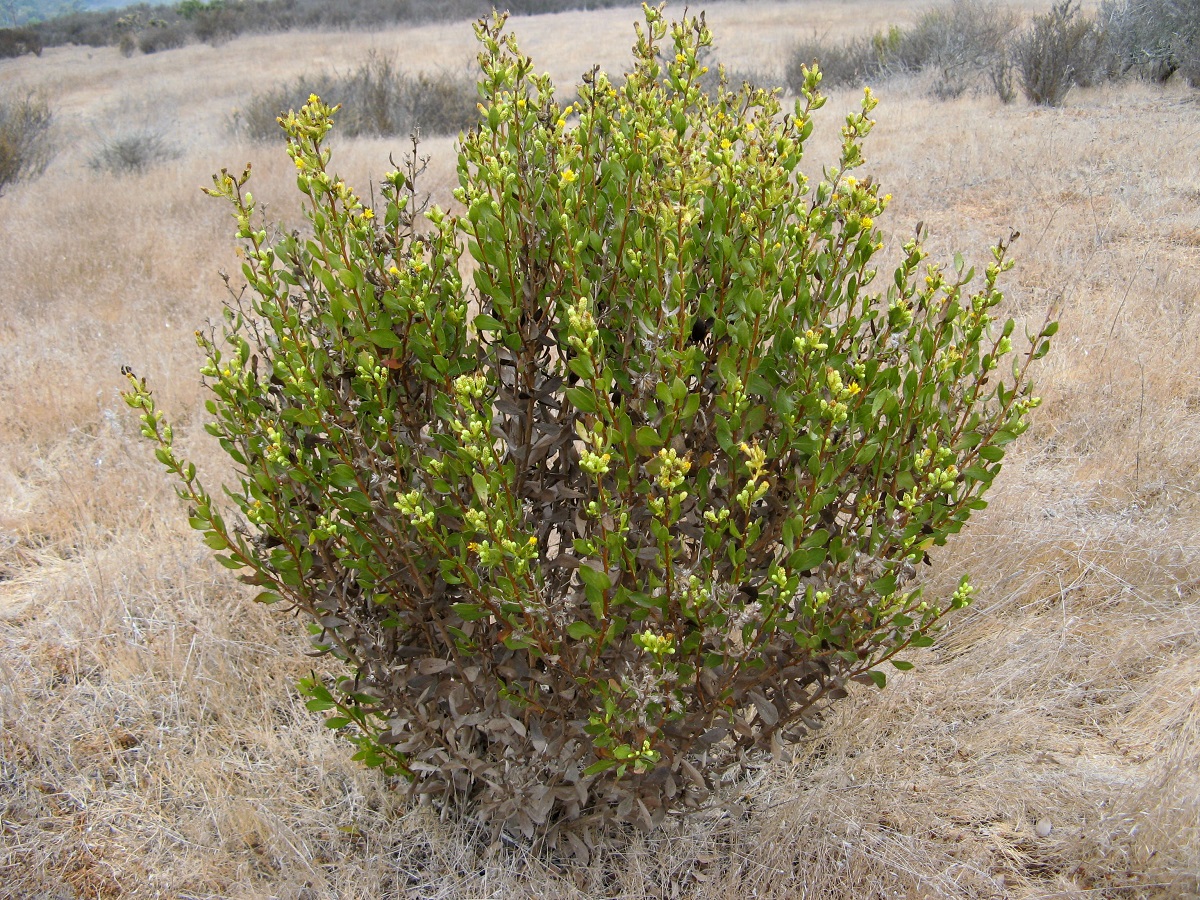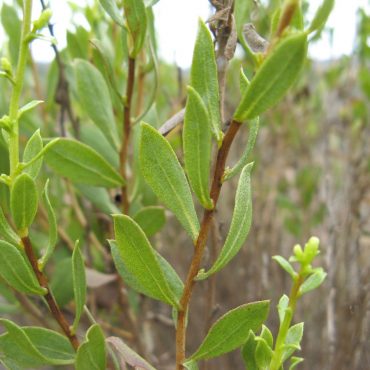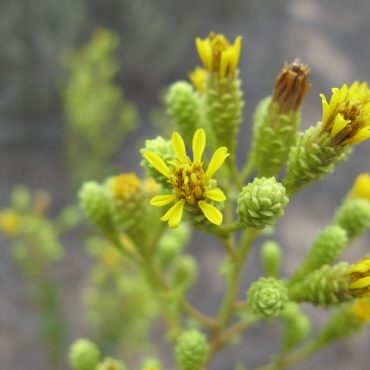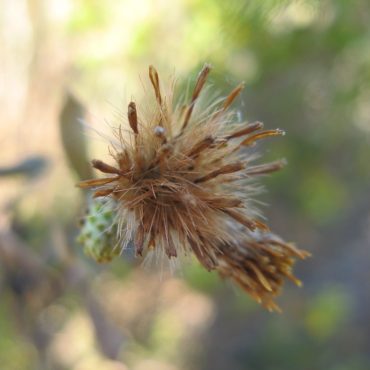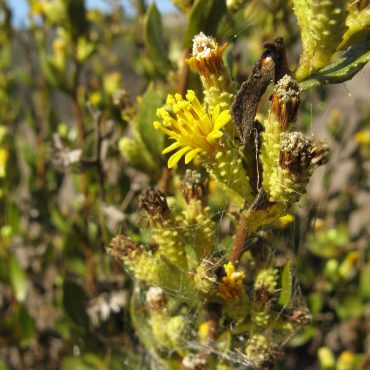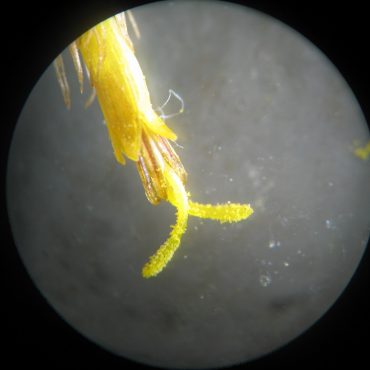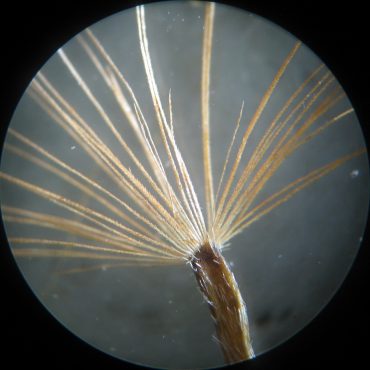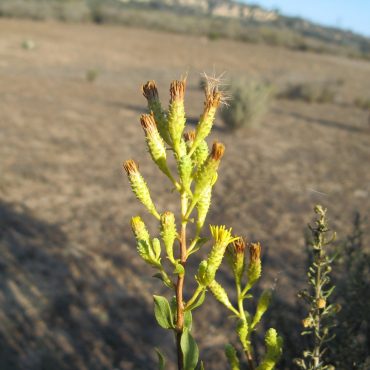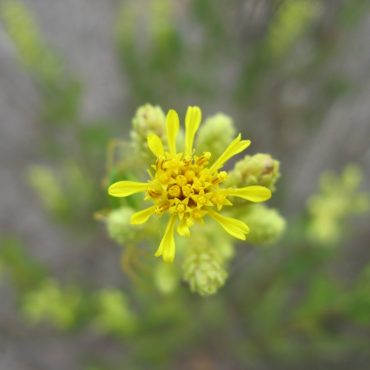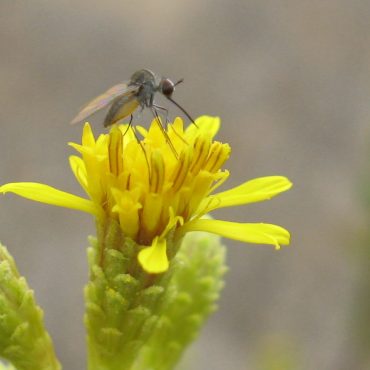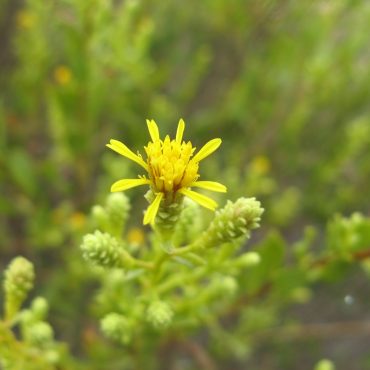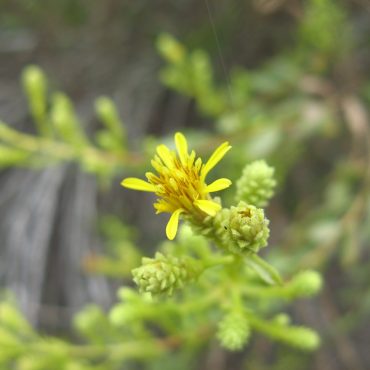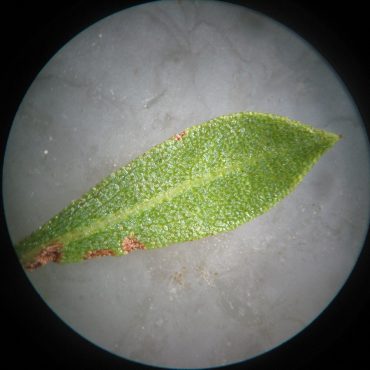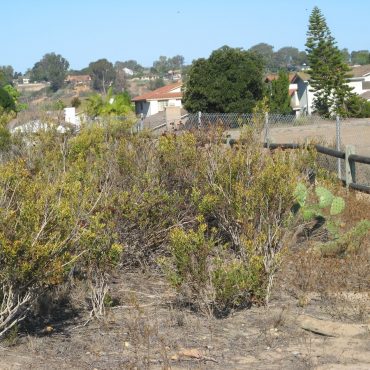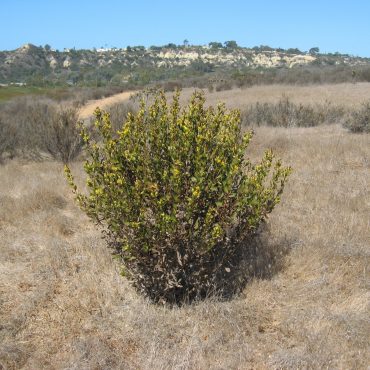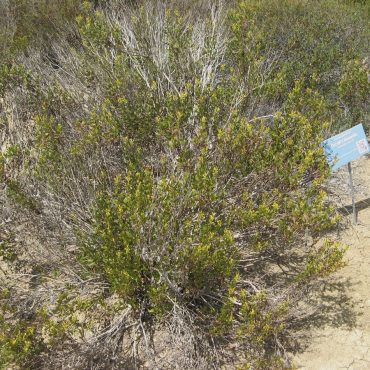Orcutt’s goldenbush is a small, evergreen shrub that blooms yellow in the late summer and early fall. It resembles goldenbush (Isocoma menziesii) and sawtooth goldenbush (Hazardia squarrosa). One difference is the flower head. Orcutt’s goldenbush has both disk and ray flowers (like a daisy), while the other two have only disk flowers.
A few years ago, Orcutt’s goldenbush existed in California as a single small population in Manchester Habitat Conservation Area, just north of San Elijo Lagoon. To reduce the risk of losing this population to fire or disease, seeds were collected, grown in a local nursery and the seedlings planted in nearby protected areas. Stonebridge Mesa, on the east end of the Reserve, received 156 seedlings. In 2012 only 46 plants survived, but many were blooming, and seedlings were found – happy signs of recruitment. We remain optimistic that the new population will survive.

